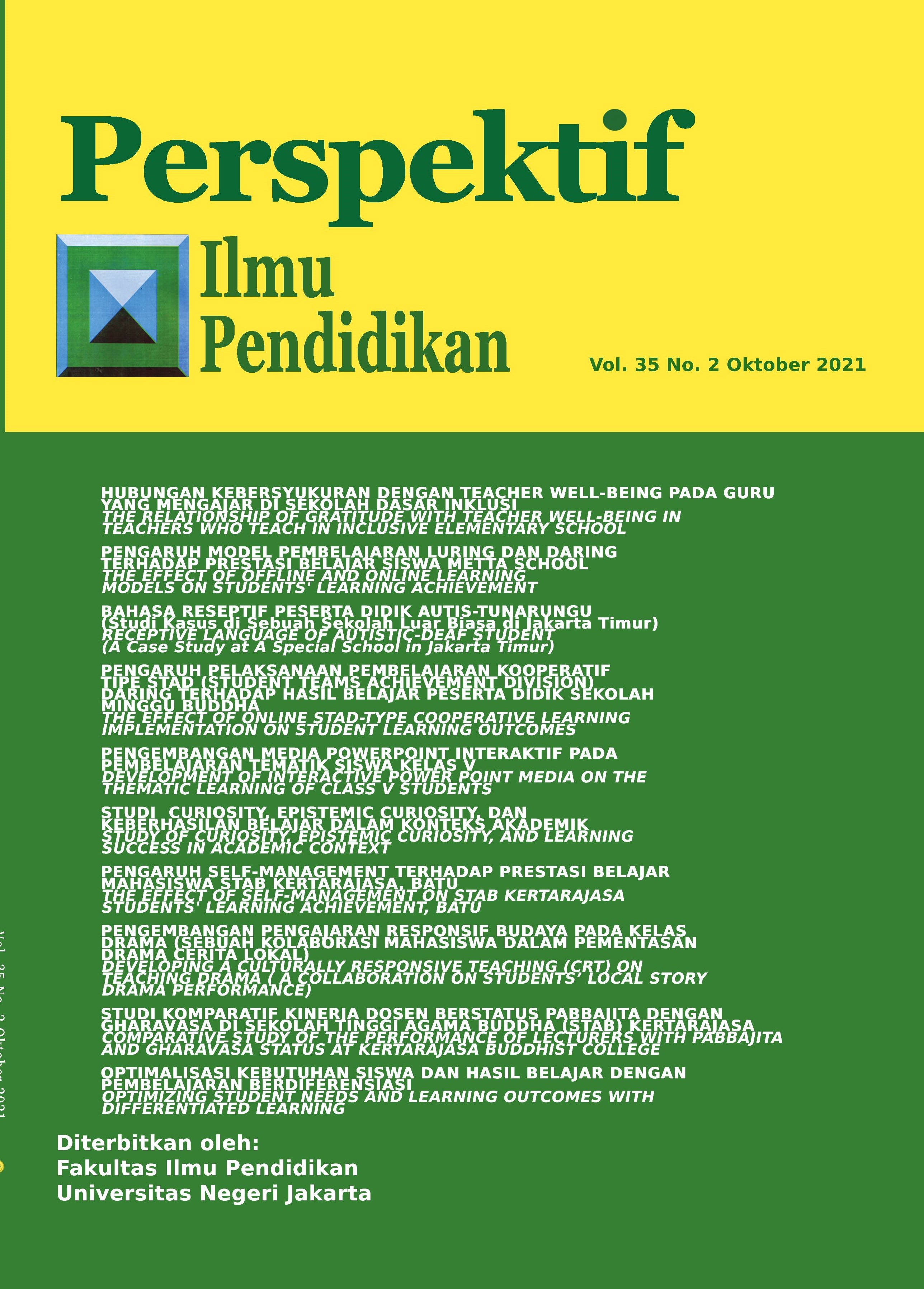STUDI CURIOSITY, EPISTEMIC CURIOSITY, DAN KEBERHASILAN BELAJAR DALAM KONTEKS AKADEMIK
DOI:
https://doi.org/10.21009/PIP.352.6Keywords:
academic, learning, curiosity, epistemic curiosityAbstract
Abstract: The role of learning is pretty diverse has provided convenience in wading into human life. It is not in a doubt, learning cannot be obtained easily, because it takes various elements that can accelerate success during the process. This can very least be realized by the existence of curiosity. Scientists believe that curiosity can create a more dynamic learning atmosphere, such as to conduct deep exploration and avoid the adequacy of acquiring basic knowledge only. Therefore, an understanding of all subjects involved in the process of developing curiosity while learning is required. This literature study will also be presented a lot of information about the four dimensions in curiosity, including diversive curiosity, specific curiosity, perceptual curiosity, and epistemic curiosity. Of these four dimensions, the study of epistemic curiosity becomes a key point of learning success in an academic setting. Epistemic curiosity is a type of curiosity in the form of a desire to acquire knowledge that motivates learners to learn new ideas, minimize information gaps, and solve complex problems that require critical thinking. Although learning is not always connected to school and academics, the academic world that is the main focus regarding becoming an insight that complementing study of epistemic curiosity itself. Based on reconfirmed information, epistemic curiosity is the dimension playing the most role in improving the learning achievement.
Keywords: academic, learning, curiosity, epistemic curiosity
Downloads
Published
How to Cite
Issue
Section
License
Authors who publish with this Journal agree to the following terms:
- Author retain copyright and grant the journal right of first publication with the work simultaneously licensed under a creative commons attribution licensethat allow others to share the work within an acknowledgement of the work’s authorship and initial publication of this journal.
- Authors are able to enter into separate, additional contractual arrangementfor the non-exclusive distribution of the journal’s published version of the work (e.g. acknowledgement of its initial publication in this journal).
- Authors are permitted and encouraged to post their work online(e.g. in institutional repositories or on their websites) prior to and during the submission process, as it can lead to productive exchanges, as well as earlier and greater citation of published works.
-
Users/public use of this website will be licensed to CC BY-NC-SA Creative Commons Attribution-NonCommercial-ShareAlike 4.0 International License












